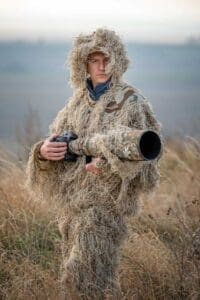The Dangers and Thrills of Wildlife Photography
Wildlife photography is a genuinely awesome experience. Recording the essence of a wild animal in its natural environment can be breathtakingly attractive and gratifying. Yet, it’s a given that working with wild animals can be rather harmful too. As a wildlife professional photographer, you will be getting up close and personal with wild creatures, which can lead to riskier situations than you expected. However, if you take the appropriate safety measures, the benefits from this art form are worth the threats. So, is wildlife photography unsafe? In this post, we will explore the sort of threats and precautions worth endeavor.
Accident Risks:
Wildlife photography includes its fair share of mishap dangers, both for the photographer and the animals. You can fall into a river or climb over a fence and wind up being struck by an animal that really feels endangered. Your security should constantly be your top concern. When dealing with wildlife, keep a secure distance in between them and yourself. Find out about the animal’s habits prior to approaching it. Don’t disturb or interrupt their natural surroundings.
Parasites and Diseases:
Wild animals could lug bloodsuckers and diseases that can be damaging to humans. It is necessary for digital photographers to take safety measures to prevent getting attacked by ticks, insects, or seeps. Purchase ideal clothing that covers your body, use bug spray, and practice correct health. Research the regional clinical centers at the area you plan to visit to make sure that you can have accessibility to treatment instantly if essential.
Ecological Hazards:
Wildlife photography will commonly take you off the beaten track and right into the wilderness. This journey may expose you to all-natural hazards like irregular terrain, steep cliffs, and slippery rocks. Make certain you use comfortable yet useful shoes for these problems and pack extra water and food.

Animal Behavior Risks:
Some risky actions consist of coming close to animal moms and dads and their children, disrupting breeding routines, or changing the setting. It is always better to observe the animals from a risk-free distance in their natural environment. Staying peaceful and still is also important to stay clear of alarming and shocking the animals. Bear in mind to value the creatures by never ever hurting or capturing them.
Legal Risks:
A wild animal in its natural environment is taken into consideration public home, and it is unlawful to disturb or disrupt their day-to-days live. Photographing without the called for licenses can result in extreme legal and economic repercussions. Constantly do your study and get the essential permission that the area may need to prevent any kind of lawful concerns.
In Conclusion:
Wildlife photography can be an unsafe yet satisfying journey. The threats can be decreased by following the proper precautions highlighted in this article. Understanding the animal and its environment, putting on the ideal equipment, and researching the legal demands are the key things that professional photographers can do to reduce any kind of risks. It is important to remember that wild animals should be respected and not interrupted. As a wildlife digital photographer, it is your duty to secure your safety while not influencing the setting. Capture the moments but do so with empathy and regard.




